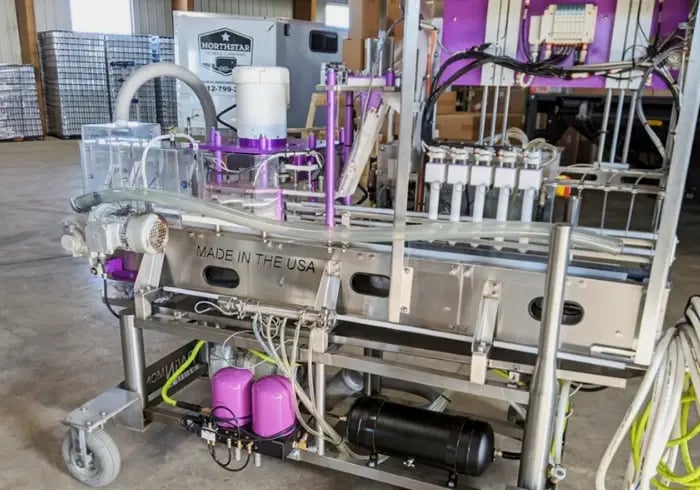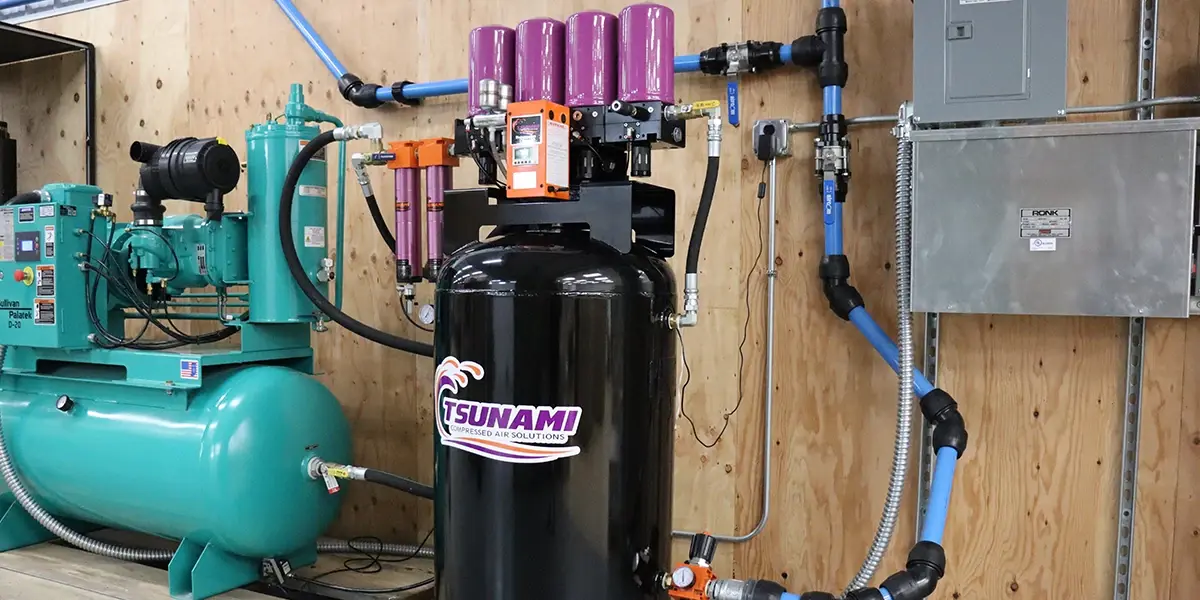Avoid Contaminates in the Food and Beverage Industry: Quality Food Grade COMPRESSED AIR
Compressed air powers things like conveyors, mixers, sorters, and other machines in factories. Clean, dry air helps these machines work better and keeps everything running smoothly. In food and drink packaging, compressed air is also important because it helps run equipment and makes sure products meet FDA rules.
Compressed air in the food industry
‾‾‾‾‾‾‾‾‾‾‾‾‾‾‾‾‾‾‾‾‾‾‾‾‾‾‾‾‾

In the food industry, compressed air often comes in direct contact with food ingredients. It’s used to blow off food debris and in many types of packaging machines, such as vacuum sealers, carton fillers and sealers, meat packaging, and dehydrators. During these steps, the air touches either the food itself or things that will come into contact with it. Compressed air is used all throughout food and beverage production and packaging.
From moving products on conveyors to vacuum sealing, compressed air is essential for taking food from the factory to your table.
Types of Air Usage in the Food Industry
There are two main ways compressed air is used in the food industry: direct contact and indirect contact. Both are important for keeping operations running smoothly and making sure food stays safe and high quality.
-
Direct Contact: The air touches the food, like when blowing off produce or forming meat patties
-
Indirect Contact: When compressed air powers equipment, such as conveyors or mixers
Direct Contact
‾‾‾‾‾‾‾‾‾‾‾‾‾‾
Direct contact applications in the food industry pose a threat to end consumers if the compressed air isn't properly filtered. Oils, dust, and moisture from the air or air pipes can get onto the food and make it unsafe for consumption in accordance with FDA requirements. Some common examples where air touches food directly include:
- Blowing off leftover food debris
- Vacuum sealing
- Filling and sealing cartons
- Meat packaging and drying
Indirect Contact
‾‾‾‾‾‾‾‾‾‾‾‾‾‾
For indirect contact applications, the cleanliness of the compressed air isn't a concern for consumers because the air never touches the food. Instead, the air powers tools and equipment that help run the machines. Some common examples of indirect food contact use for compressed air:
- Products moving on conveyors
- Ingredient Mixers
- Food sorters
- Liquid filling stations
- Roll stock packaging machines
- Case and box packaging machines
Food Grade Compressed Air
‾‾‾‾‾‾‾‾‾‾‾‾‾‾‾‾‾‾‾‾‾‾‾‾‾‾‾‾‾
Food grade compressed air is air that meets ISO cleanliness standards for a specific machine or process. While there are no legal ramifications for the quality of air used in these processes, some manufacturers recommend and provide a specific air quality standard for their equipment.

Food Safety for Compressed Air
‾‾‾‾‾‾‾‾‾‾‾‾‾‾‾‾‾‾‾‾‾‾‾‾‾‾‾‾‾
Compressed air used in the food industry must be clean and dry to be safe around food. When air is properly filtered and treated, it can safely touch food or surfaces that come into contact with food. Installing a food grade compressed air filter on food packaging equipment is important for meeting food safety standards.
The ISO 8573-1 2010 standard gives clear rules for what counts as food-safe compressed air. Sometimes, manufacturers will tell you which ISO classification their equipment or process needs. For example, in food forming, you need Class 2 for particles and humidity, and Class 1 for oil. The chart below shows the exact requirements for compressed air filters in food packaging.
Compressed Air Purity Classification Chart
Source: International Organization for Standardization
Using Compressed Air That Meets Quality Standards: Contaminant Sources and Benefits
‾‾‾‾‾‾‾‾‾‾‾‾‾‾‾‾‾‾‾‾‾‾‾‾‾‾‾‾‾
Contaminant Sources
- Ambient air containing water, oil, or bacterial parts
- Rusted pipes
- Charcoal filters and canisters with shed particles
- Sealing tape
- Condensed water, liquid, and oil in the system from vapor or aerosol
- Airborne microbes
- Humidity present in the air
Benefits
- Limited microbial and bacterial growth on products and equipment
- Eliminating corrosive particles in sterilized food
- Stopping hazardous ramifications to consumer health
- Absence of accumulation of contaminants in food and beverage products
- Reducing pipe corrosion and increasing the lifespan of filters, drains, and machinery
- Increased manufacturing efficiency, saving time, money, and resources
Your Clean, Compressed Air For Food & Beverage Manufacturing Checklist
1. Assess your air composition quality.
2. Assess the level of moisture in the air.
3. Identify what risks are associated with the results.
4. Determine what controls are in place to remedy this. If there are none, get to work!
5. A compressed air improvement plan, including extra preventative steps to ensure customer safety and increase plant efficiency.
Clean compressed air > healthy customer > better functioning machinery
Related Articles
4 min read
The Importance of Compressed Air in the Food Industry
Tsunami Team: Jun 6, 2024
2 min read
Von Hanson's Snacks Uses Air Dryers for Food Safety
Tsunami Team: May 25, 2022


